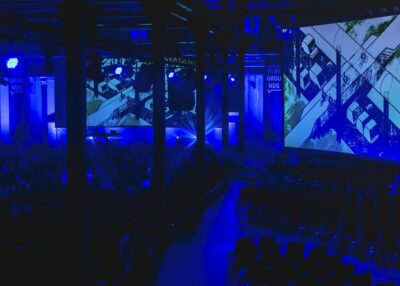7 Ways Traditional Marketing Can Help Organic Search Optimization
Marketing is ever-evolving, but that doesn’t mean that marketers can’t benefit from tapping into the lessons of more traditional approaches in order to boost their organic search performance.
Even as digital approaches such as social media and influencer marketing continue to show their value, the core principles of offline-based marketing still ring true. With this in mind, even the most technologically fluent marketers understand the power that traditional techniques hold and their relevance - especially when it comes to combining strategies to optimize their presence online.
In the age of the internet and online exposure, some traditional marketing techniques are in decline. However, others are still thriving and boosting businesses in both the analogue and digital worlds. For instance, small business owners may find that TV and radio are too costly and unjustifiable - however, signage and billboards have the power to drive interest on a new scale now that users have the ability to instantly query anything they see via their smartphones.
There’s no shortage of ways in which traditional marketing is helping the optimization of organic search approaches. Let’s take a look at seven key ways in which these analogue approaches have infiltrated the mainstream:
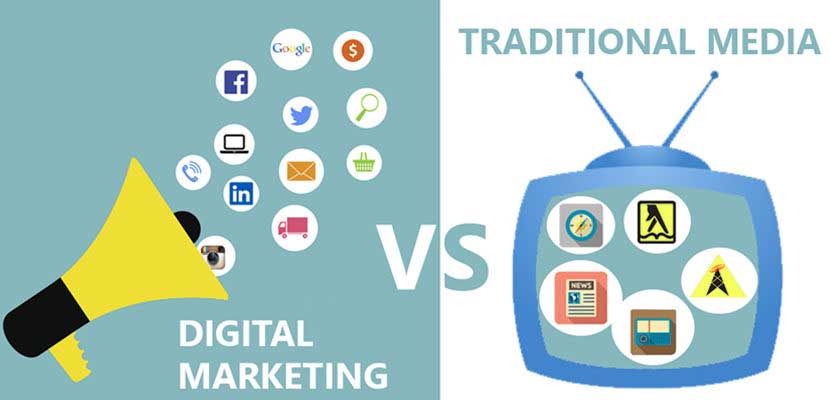
#1 The Importance of well-thought-out campaigns
More traditional media channels like print, radio, and television were formerly the only avenues available to appeal to audiences from the comfort of their own home. It’s no secret that the costs associated with this sort of service can range into the tens of thousands depending on the type of advert you run and the time of day in which it arrives.
However, this forced marketers to be much more shrewd in their advertising campaigns. Television ads needed to be well-thought-out considering the costs involved, and businesses needed to ensure that the correct message was communicated.
This represents a valuable lesson to be learned in modern marketing. It’s well documented that advertising online is cheaper than, say, advertising on TV - but this can open the door for complacency among marketers. Social engagements don’t automatically turn into conversions, and they don’t lead to organic searches either.
Although traditional marketing is sometimes seen as incompatible with digital approaches, analog campaigns can certainly drive organic searches.
One of the most effective cases for this can be found in Brewdog’s traditional campaign in 2019. Rather than using billboards and television advertising space to promote a product, their campaign simply displayed the word ‘advert’ in capital letters alongside an image of a product.
In the golden age of traditional advertising, this would have been seen as a wasted opportunity to push sales of a product - but it features just enough brand signifiers to convert audience curiosity into searches.
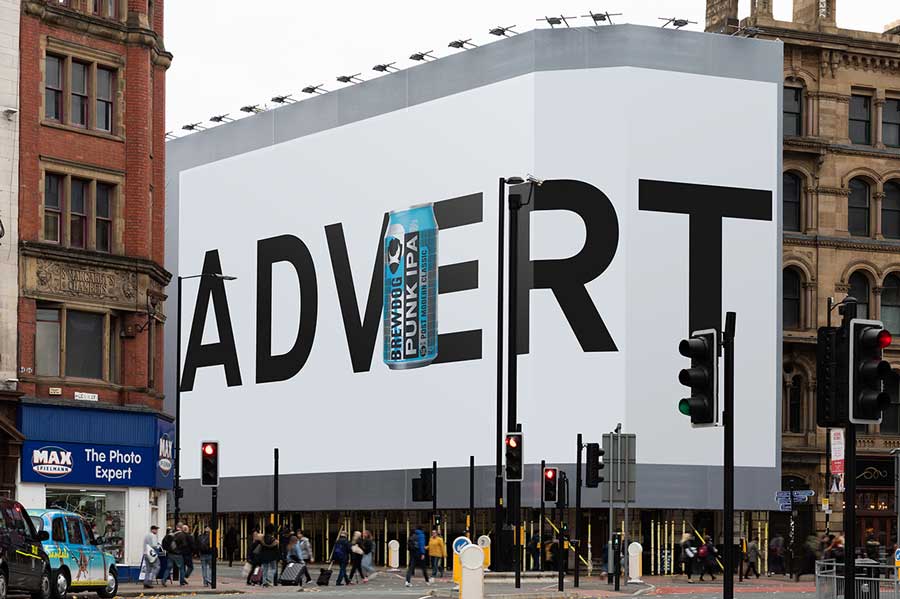
#2 The value of tangible marketing
Giving target audiences the chance to actually hold and touch a product with your brand on it is hard to replicate online. In fact, the chart below shows that tangible products are still the leading way for retailers to engage with and retain customers.
Placing a physical item in the hands of your customer can help to build a connection that can evolve into brand loyalty, recognition and, ultimately, conversions. Tangible materials can be more memorable and meaningful for prospective customers.
Internet marketing has looked to replicate these forms of tangibility by turning to influencer marketing. By utilising respected influencers to showcase products and interact with them as if they’re actually customers getting to grips with a sample, marketers aim to establish a psychological connection between their products and customers.
However, these connections and samples are still best left in the realm of traditional marketing, and the levels of brand recognition and loyalty that can come from physically interacting with products can not only generate more organic searches but also more intent to purchase among consumers.
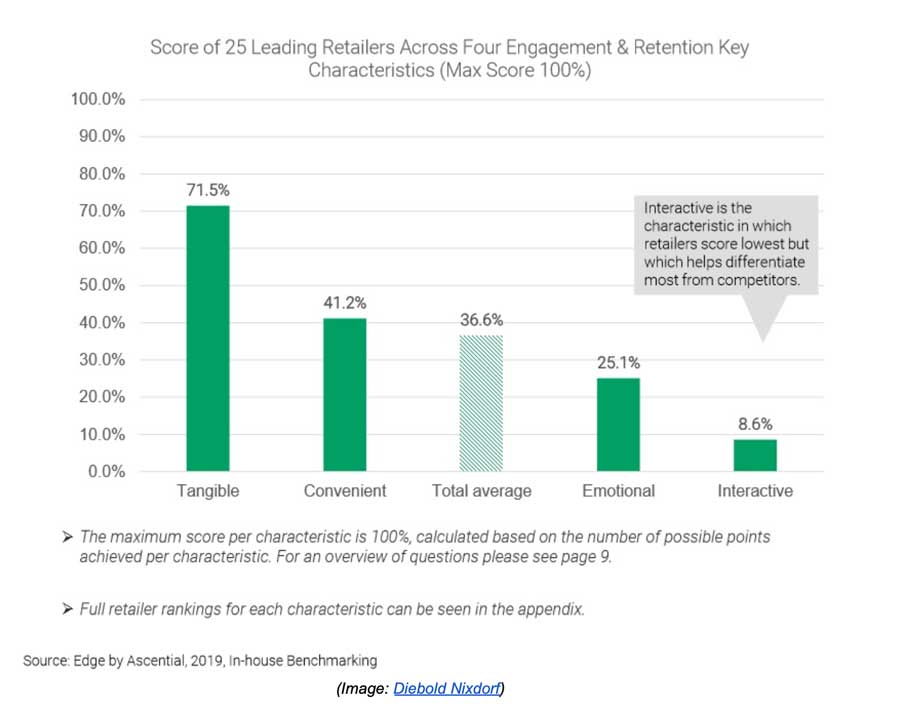
#3 Valuing relationships
In the glory days of traditional marketing, customers amounted to more than simple statistics regarding impressions and click-throughs. Marketers could concentrate on appealing directly to real people, with more personal aspects associated with generating sales.
The most competent marketers in this pre-internet age would form relationships by having conversations with customers. Focus grouping and other sources of interaction can help to shape tailor suited campaigns that can resonate on a more personal level.
For example, the targeting and retargeting functions offered by Finteza allows marketers to forensically pick the precise times of day that their target audience is most active to display adverts to them. However, these features are worth little if nobody knows what their targets actually think of the content they see.
By utilising more traditional approaches towards building relationships with consumers, marketers can take what they’ve learned online to appeal to a vast audience of like-minded users around the world.
#4 The necessity of perfected pitches
In the golden age of traditional marketing, there was no AdWords to cling on to in order to tweak advertising content. Nor was there A/B testing that could be utilized for large audiences.
Marketers simply had one opportunity to make a sale. With no second chances, advertising materials needed to come with a winning tagline and pitch.
Today, businesses spend more time looking at ways to protect their branding, rather than focus on perfecting single pitches. However, this seems like a folly in an online space where the marketplace is flooded with competitors and more undercutting offers than ever.
Whether your modern pitches come as email subject lines or title tags, it’s imperative that the traditional methods of creating engaging one-liners that can spark interest is upheld wherever it’s possible.
The beauty of modern marketing is that it gives new life to some traditional approaches. When it comes to perfect pitching, marketers now have the freedom to create more oblique advertising taglines and approaches. Here, it’s not important to promote a product or service in a newspaper or on TV, but it’s vital to build intrigue that will invariably lead to organic searches and - eventually brand recognition.
#5 Transferring the value of keywords
Some facets of marketing remain just as valuable in any era. This is the case for keywording.
Traditionally, keywords can be used to create instant brand recognition in analogue advertising. Only a simple look into how synonymous the company names Sellotape and Hoover have become with the jobs that they do will tell you that the right use of words can work wonders for your marketing campaigns.
Elsewhere, Kodak’s ‘you press the button, we’ll do the rest’ advertising campaigns in the late 19th Century achieved a resonance that’s stood the test of time (see below).
Today, the challenge of keywording advertising campaigns is easier than ever, with platforms like Ahrefs effortlessly identifying the most effective long-form keywords to rank for in search results.
In this manner, traditional advertising could complement keywording campaigns online. By identifying high-value keywords, marketers can use the phrases to create profitable slogans that can prompt online and offline campaigns and subsequent search engine queries as a result. 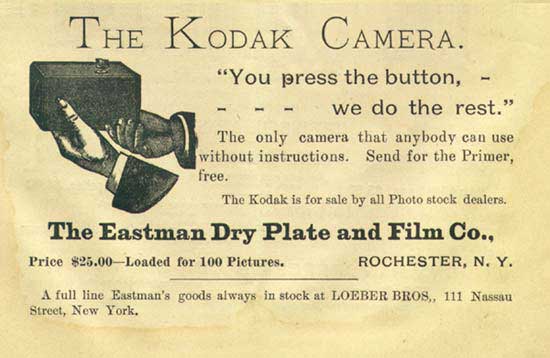
#6 Harnessing the art of the freebie
Another marketing strategy that’s certainly stood the test of time is the art of the freebie. Whether they’re free digital courses or physical information booklets, consumers love getting stuff for free.
Be sure to work some form of branding and figure out what information can be offered out by your organization free of charge. If you’re a business that claims to be experts in a specific field, be sure to demonstrate your expertise in a free book or prospectus. If, on the other hand, you’re a retail store, it may still be worth creating branded products which can generate more organic searches over longer periods of time.
#7 Championing event marketing
Traditional copyright marketing ruled the roost in days of yore, but in this day and age, it’s vital to generate a buzz. While generating compelling copy has successfully transitioned into a more online space, event marketing is still one of the most effective ways of not only building interest in products and services but also in terms of networking.
Modern online marketing practices may have become essential in ensuring the long-term viability of businesses, it’s safe to say that traditional approaches to the industry are going nowhere fast.
As we continue to look for alternative ways to optimise conversions and search engine queries, it appears that traditional marketing is very much still on hand to teach us a thing or two about winning customers.
Author: Dmytro Spilka
Dmytro is a CEO at Solvid, a creative, long-form content creation agency based in London. Founder of Pridicto. His work has been published in Shopify, IBM, Entrepreneur, BuzzSumo, Campaign Monitor and Tech Radar.







